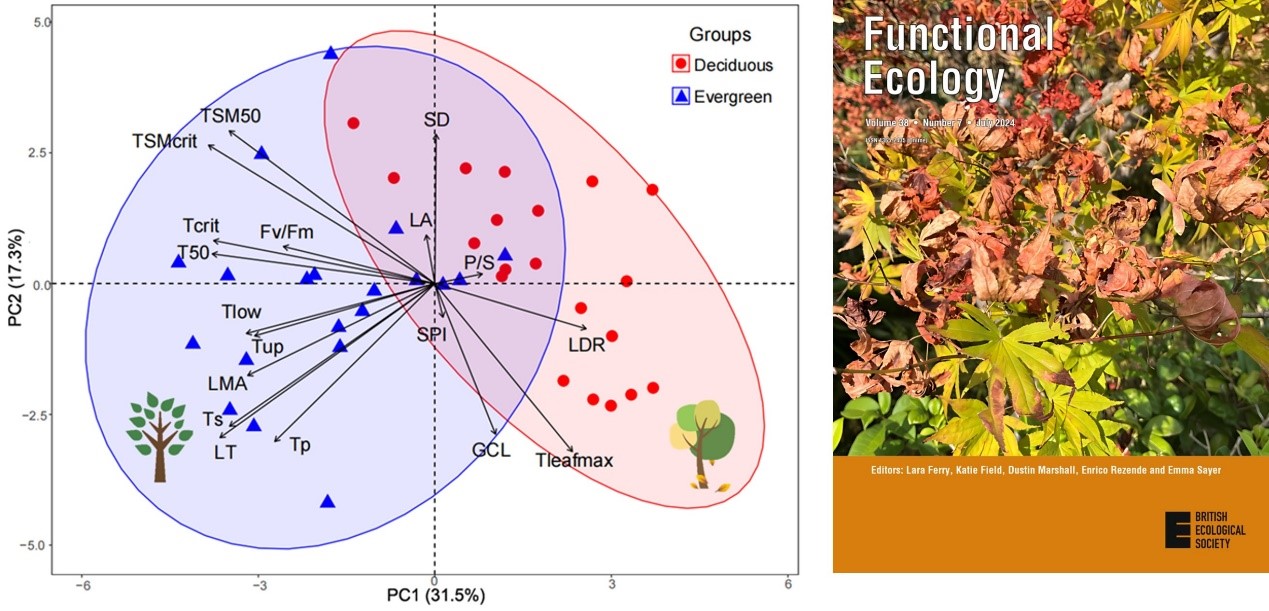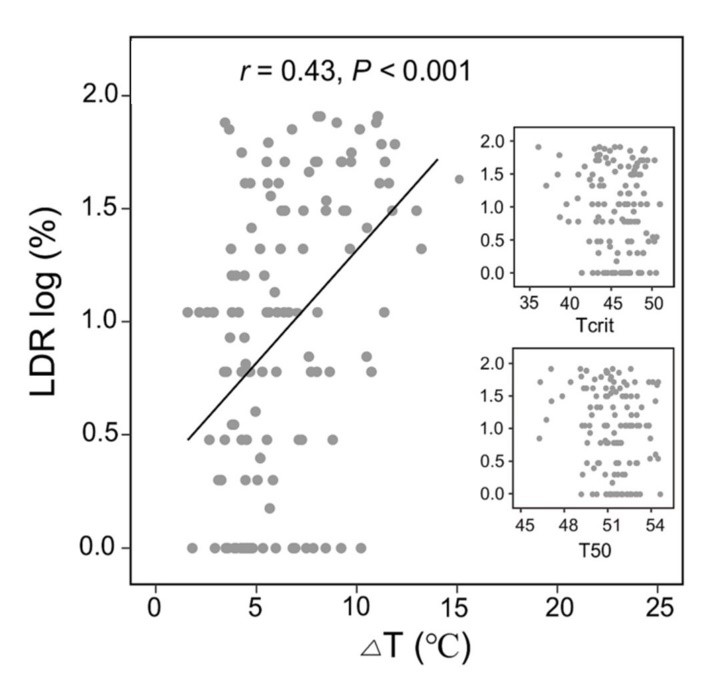How to predict plant leaf damage under heat waves? An eco-physiological exploration
“The era of global warming has ended; the era of global boiling has arrived.” António Guterres, UN secretary-general, said in July 2023. In recent years, we have directly experienced the increased frequency and intensity of heatwave events, which not only affect our daily life, but also seriously impact plant growth and survival. Urban plants are particularly sensitive to heat waves, because the effects of ‘heat islands’ and ‘dry islands’ generate much higher vapor pressure deficit in cities than in surrounding areas. In the summer of 2022, many regions in China experienced nearly two months of record-breaking heat waves, leading to extensive leaf damage of urban plants in China, especially cities along the Yangtze River (Figure 1). However, the eco-physiological basis of leaf damage in plants under natural heat waves is still unclear. Therefore, accurately assessing plant thermal risk is essential for predicting plant survivability under heat stress and selecting heat-resistant species.
Members of the Plant Ecophysiology Research Group from South China Botanical Garden, Chinese Academy of Sciences (PI: Dr. Qing Ye), assessed leaf damage ratio and measured leaf heat tolerance indices and leaf economic trait of over 100 woody species from five cities along the Yangtze River. They found that leaf habit influences photosynthetic heat tolerance, that is, evergreen species with higher leaf construction costs, which exhibited higher leaf heat tolerance than deciduous species (Figure 2). This is consistent with the results showing that evergreen species suffered significantly less leaf damage ratios during the heat waves. However, deciduous species might adopt a partial leaf-shedding strategy to survive under heat waves. Additionally, the significant correlation between leaf thermal sensitivity and leaf damage ratios under natural conditions provides a potential indicator for predicting leaf damage during heat waves (Figure 3). These researches discussed the ecophysiology of leaf damage under natural heat waves from the perspectives of photosynthetic heat tolerance and leaf economic spectrum. Future studies will consider more physiological traits to comprehensively understand plant responses and adaptations to heat waves.
The research findings have been published in Functional Ecology (cover story, Figure 2) and Science of the Total Environment. Master student Haoping Zhang and postdoc Qiurui Ning from South China Botanical Garden, Chinese Academy of Sciences, are the first authors of these two papers, respectively. Dr. Hui Liu, associate professor, is the corresponding author. These studies were supported by the National Natural Science Foundation of China and the China Postdoctoral Science Foundation. These papers can be downloaded from the following links: https://doi.org/10.1111/1365-2435.14562 and https://doi.org/10.1016/j.scitotenv.2024.170022.
During the research, to select representative cities and sampling sites, the researchers conducted an online survey titled "Plant Survival Survey Under Extreme Heatwave" which attracted media interests such as Guangzhou Daily and China Environment News. They reported and followed our research progress during the last three years (in Chinese): https://gzdaily.dayoo.com/pc/html/2022-08/27/content_870_802644.htm
https://gzdaily.dayoo.com/pc/html/2023-08/11/content_872_833493.htm
https://www.cenews.com.cn/news.html?aid=1083552
Additionally, during the 2022 field work, we received tremendous supports from many friends in both scientific and non-scientific communities. All participants joint the experiments have been listed as co-authors, and here we acknowledge again those not listed in papers. Although our initial idea of building a "National Network for Monitoring Plant Damage Under Extreme Climate" has yet to be realized, we will keep focusing on plant heat and drought tolerance studies and look forward to further collaborations with our scientific peers.
First author information: Hui Liu: associate professor, Research Center for Ecology and Environmental Sciences, South China Botanical Garden, Chinese Academy of Science, Research field: Plant functional traits, adaptation and evolution, E-mail: hui.liu@scbg.ac.cn ; Tel :020-37081975.

Figure 1. Plant leaf damages from cities along Yangtze River under natural heat waves. Photos were taken by Qiurui Ning.

Figure 2. a) Principal component analysis of evergreen and deciduous urban woody species based on 18 leaf functional traits. b) Cover story: Scorched leaves of Acer palmatum under the heat waves in this study. Photo was taken by Qiurui Ning in Chongqing, China, on August 28th 2022.

Figure 3 Relationship between observed leaf damage ratio (LDR) and photosynthetic thermal sensitivity (ΔT) and tolerance (Tcrit and T50).